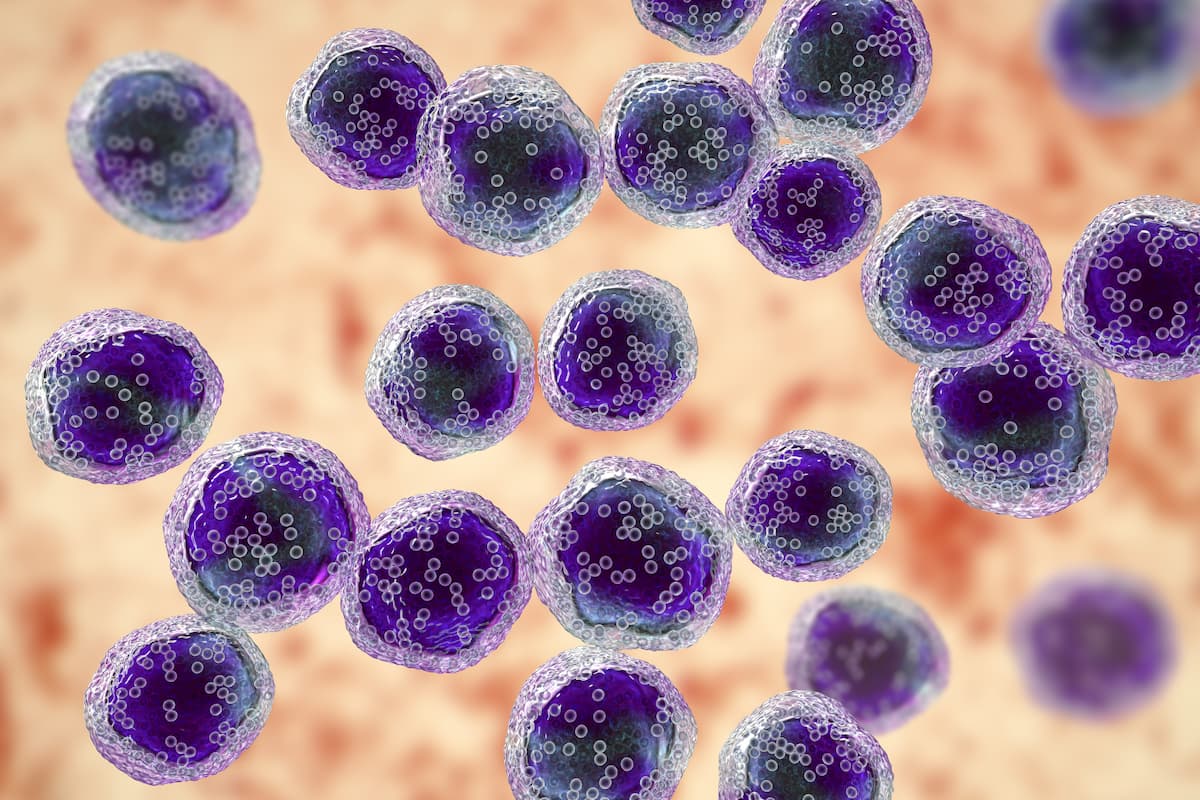Anti-GPRC5D CAR T Cells May Be Viable Multiple Myeloma Salvage Therapy
A Chinese phase 2 trial found that anti-GPRC5D CAR T-cell therapy elicited an ORR of 84% in patients with relapsed or refractory multiple myeloma.
With anti-GPRC5D CAR T-cell salvage therapy, the overall response rate was 84% in patients with relapsed or refractory multiple myeloma who progressed after anti-BCMA CAR T-cell treatment.

Anti-GPRC5D CAR T-cell salvage therapy elicited responses in the treatment of patients with relapsed or refractory multiple myeloma who progressed after anti-BCMA CAR T-cell treatment, according to findings from a phase 2 trial (ChiCTR2100048888) published in The Lancet Haematology.
With a median follow-up of 12.6 months (IQR, 8.2-20.8), the overall response rate (ORR) was 84% (n = 31/37; 95% CI, 68%-94%); 35% (n = 13) were partial responses (PRs), 14% (n = 5) were very good PRs (VGPRs), 14% (n = 5) were complete responses (CRs), and 22% (n = 8) were stringent CRs. Additionally, 3% achieved a minimal response, and 11% had stable disease.
The median time to first response was 0.5 months (IQR, 0.5-1.0), and the median time to best response was 1.0 month (IQR, 0.5-3.0).
In patients with only biochemical progression after anti-BCMA CAR T-cell therapy (n = 11), the ORR was 91% (n = 10/11); 18% had PRs, 9% had VGPRs, 18% had CRs, and 45% had stringent CRs. Additionally, 9% had stable disease. Of 4 patients who received prior repeated anti-BCMA CAR T-cell therapy infusions and developed disease progression, the response rate with anti-GPRC5D CAR T-cell therapy was 100%.
Prior to anti-GPRC5D CAR T-cell therapy, subsequent anti-myeloma therapies following progression on last anti-BCMA CAR T-cell therapy led to an ORR of 21% (n = 3/14); 2 patients responded to CD38 antibody-based therapy, 1 patient responded to carfilzomib (Kyprolis)-based therapy, and 0 patients responded to selinexor (Xpovio)-based therapy.
A post hoc analysis revealed that, of the 14 patients who received subsequent anti-myeloma therapy, treatment with anti-GPRC5D CAR T-cell therapies led to an ORR of 71%, which was significantly higher than the response rate after receipt of prior anti-myeloma therapies (P = .039).
Of all the patients, 22% had an improved response to anti-GPRC5D CAR T-cell therapy vs prior anti-BCMA CAR T-cell therapy, 32% had an equivalent response, and 46% had an improved response with anti-BCMA CAR T-cell therapy.
Univariate analysis showed that a high Karnofsky performance score was the only variable associated with an improved ORR (P = .0053).
“In conclusion, anti-GPRC5D CAR T-cell salvage therapy induced a high response rate and might be a potential treatment option in patients with relapsed or refractory multiple myeloma who had progressed after anti-BCMA CAR T-cell treatment,” wrote senior study author Kailin Xu, MD, from the Department of Hematology at The Affiliated Hospital of Xuzhou Medical University in Xuzhou, China, and the Blood Diseases Institute of Xuzhou Medical University, with coauthors in the paper. “Although these findings are promising, further investigations are warranted to establish the long-term efficacy and to delineate the patient subgroups that will derive the most benefit from this therapeutic approach.”
The trial enrolled a total of 37 patients who received a single dose of intravenous anti-GPRC5D CAR T cell at 2 x 106 cells per kg on day 0. Additionally, all patients were required to have measurable disease before lymphodepletion consisting of 30 mg/m2 of daily fludarabine for 3 consecutive days then 750 mg/m2 of cyclophosphamide on day 1 then 2 days of rest before anti-GPRC5D CAR T-cell infusion.
Eligible patients were between 18 and 70 years old with relapsed or refractory multiple myeloma per International Myeloma Working Group (IMWG) criteria. Additionally, patients had a Karnofsky performance status of 50 points or higher, a life expectancy of more than 12 weeks, and prior treatment with anti-BCMA CAR T cells with evidence of disease progression.
The trial’s primary end point was the proportion of patients achieving an overall response, including PRs, VPGRs, CRs, and stringent CRs per IMWG criteria. Secondary end points included progression-free survival (PFS) and safety.
The median PFS in the entire cohort was 4.5 months (95% CI, 2.9-6.2); in patients with CRs or better, the median PFS was not reached.
Regarding safety, grade 3 or worse hematological adverse events (AEs) occurred in 100% of patients; the most common were lymphopenia (97%), leukopenia (92%), neutropenia (78%), anemia (62%), and thrombocytopenia (62%). The median duration of grade 3 to 4 leukopenia was 9 days (IQR, 5-15), neutropenia was 6 days (IQR, 3-24), anemia was 28 days (IQR, 14-41), and thrombocytopenia was 34 days (IQR, 17-41).
Reference
Xia J, Sun Q, Zhou D, et al. Anti-GPRC5D CAR T-cell therapy as a salvage treatment in patients with progressive multiple myeloma after anti-BCMA CAR T-cell therapy: a single-centre, single-arm, phase 2 trial. Lancet Haematol. 2025;12:e365-375. doi:10.1016/S2352-3026(25)00048-1
Navigating AE Management for Cellular Therapy Across Hematologic Cancers
A panel of clinical pharmacists discussed strategies for mitigating toxicities across different multiple myeloma, lymphoma, and leukemia populations.